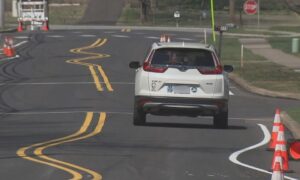Insurance is a part of life. And just about every part of life has potential insurance coverage. The downside, however, is that each type of insurance is different. There are different nuances between home, life, and car insurance, so things can get a little overwhelming.
Take car insurance, for example. There are a handful of different types of car insurance, and each of those types has a handful of different add-ons and options. It can get confusing in a minute. Luckily, people who don’t own cars don’t need to worry about car insurance, right?
That’s actually not true. People who don’t own cars still need to be concerned about car insurance coverage. But can I insure someone else’s car? Why would you want or need to insure a car that isn’t yours?
There are actually a few reasons why you would want to insure a car that isn’t your own. It’s important to know what those scenarios are and what type of car insurance is necessary for each situation.
Who needs car insurance?
The first step in this insurance journey is determining who needs car insurance. The truth is, every driver needs car insurance. That means, regardless of ownership status if you are behind the wheel of a car, you need the proper insurance.
Car insurance is actually a legal requirement in all 50 U.S. states. Now, not every state requires the same amount or type of insurance, but some type of insurance is required across the board.
Each state wants to ensure every driver can cover any potential damages to people or property. Car insurance shows you have that ability and acts as proof of responsibility. Plus, car insurance is a nice safety net to have, just in case.
What does car insurance cover?
All car insurance coverages aren’t created equal. And knowing the difference between these types of coverage is important, it’s like knowing the difference between whole and term life insurance policies.
Just because you have an insurance policy doesn’t mean that all possible avenues are covered. If you have liability coverage that doesn’t mean you’re totally covered in the event you’re hit by an uninsured motorist.
Not all states require every driver to carry every type of car insurance coverage, but it’s a good idea to have a general understanding of the most common types of coverage.
Liability Coverage
Liability coverage is perhaps the most common type of car coverage – and the most required by almost every state. There are different amounts of coverage, and the minimum coverage amounts vary from state to state.
Liability coverage is two-part coverage – bodily injury and property damage liability. Bodily injury liability helps cover the potential costs of another driver’s injuries in the event of an accident. Property damage liability, on the other hand, covers any damage to a person’s property in the event of an accident.
Uninsured/Underinsured Motorist Coverage
Even though most states require car insurance doesn’t mean that every driver carries the right amount, or any amount, of coverage. This means there are uninsured/underinsured motorists everywhere. And if you’re in an accident with this type of driver, then all costs land on you.
You can choose to carry uninsured/underinsured motorist coverage to offset any potential costs if you’re hit by an uninsured driver. This type of coverage helps cover the usual costs associated with an accident – medical bills or car repairs.
Comprehensive Coverage
Comprehensive coverage is used for car-related issues outside of an accident. This coverage would cover things like fire damage, storm damage, theft, or vandalism.
Comprehensive coverage is almost always an optional coverage, but it may be required by banks if you’re paying off your vehicle.
Collision Coverage
Then there’s collision coverage. As the name suggests, this type of coverage helps cover any damages sustained in a collision. It doesn’t have to be a car-to-car collision either. If you hit a stationary object and there’s damage, then the repairs might be covered under collision insurance.
Personal Injury Protection
Personal Injury protection, also known as PIP, is used in the event of medical expenses after an accident. It is important to note, this type of coverage is not available in every state. And, where it is available, it can be both mandatory and voluntary.
But what if you don’t own a car?
A crash course in common types of car insurance coverage is great, but what if you don’t own a car? If you find yourself behind the wheel of any car, you need to make sure you and the car are covered.
It may seem silly, but there are a handful of situations where insuring a car you don’t own is necessary. Maybe you need to borrow a car for a few days or a week. Yours is in the shop, but you still need to get to and from work.
Or maybe you’re renting a car on vacation. That rental car still needs to be covered. The good news is there are a few different ways to get a borrowed or rented car insured.
How can I insure someone else’s car?
Insuring a car that isn’t yours doesn’t have to be difficult. Yes, it’s not as easy as calling an insurance provider and asking for a policy on any old car. In fact, it’s not possible to insure a car that isn’t in your name.
But there are some pretty easy fixes to this unique problem.
Pay the Bill
One of the easiest ways to insure a car that isn’t yours is to have the owner get the car covered, then you pay the bill. There aren’t any state or federal laws keeping you from paying someone else’s car insurance bill.
You do have to be careful though. If you aren’t listed as a driver on the insurance policy, then you could be committing insurance fraud. So, if you’re footing the bill and driving the car, make sure your name is on the insurance policy.
Add a Driver
Let’s say you borrow or use the same car on a regular basis, then it might be easiest to be listed as another driver on the policy. If you’re going this route, then it’s important to make sure you are listed as one of the primary drivers.
If you’ve been added as one of the primary drivers, you don’t have to pay any portion of the monthly bill. That type of arrangement will need to be discussed with the other drivers/owners of the vehicle.
Non-Owner Car Insurance Policy
Another option is to carry your own insurance policy. There is a specific type of policy meant to cover drivers who aren’t owners of their vehicles – a non-owner’s policy. A non-owner’s policy is a liability-only policy that can cover a driver generally or for one specific vehicle.
These types of policies can be a little pricey, so take a good look at your budget before jumping into this type of insurance policy.
Driving is a great freedom, but it also comes with some inherent risks. Even without your name on the title, the car and the driver needs to be insured. If you ever find yourself driving a car that you don’t know, make sure you know how to get the right type of car insurance.

Laura Gunn writes and researches for the car insurance comparison site, CarInsuranceComparison.com. She is passionate about all drivers knowing their insurance options and driving insurance.



































